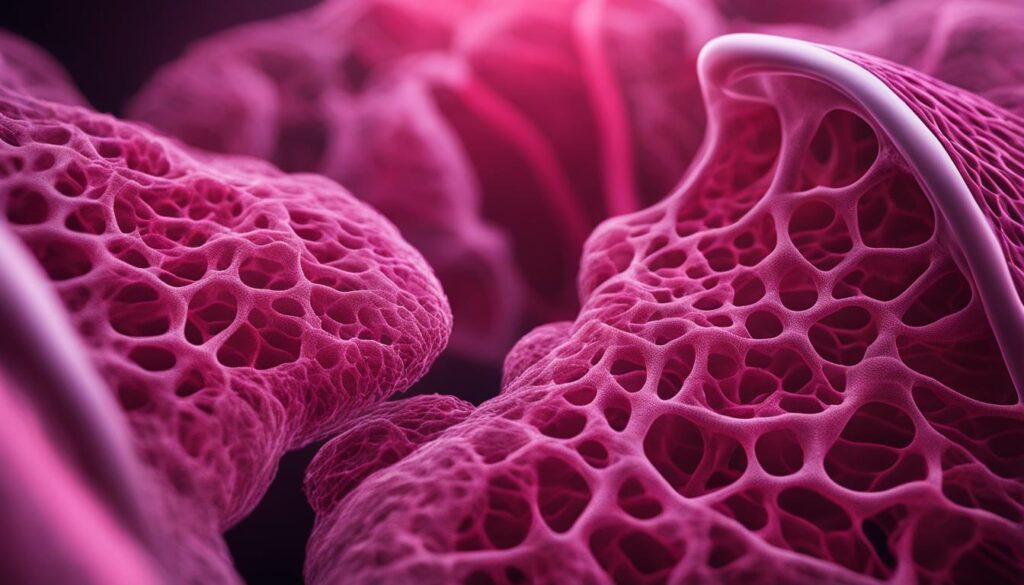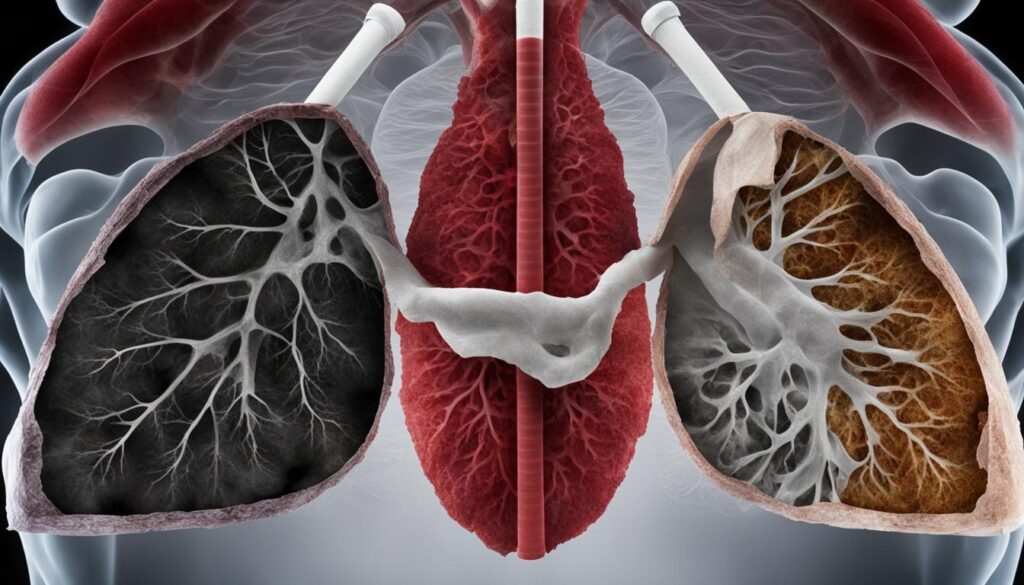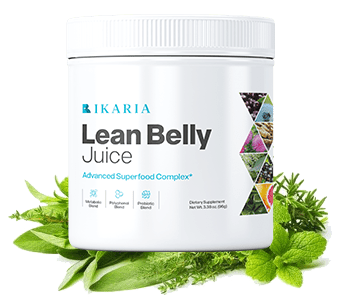
The lungs are vital organs in the respiratory system that play a crucial role in supporting overall health. They are responsible for the exchange of oxygen and carbon dioxide in the body, ensuring that our cells receive the oxygen they need and eliminating waste gases. To maintain optimal respiratory health, it is important to understand how the lungs work, be aware of common lung diseases, and take steps to protect and maintain lung function.
Key Takeaways:
- Proper lung function is essential for overall well-being and maintaining respiratory health.
- The lungs are responsible for oxygenating the blood and removing carbon dioxide.
- Lung diseases, such as lung cancer and COPD, can significantly impact respiratory health and require specialized tests for diagnosis and monitoring.
- Quitting smoking, avoiding secondhand smoke, exercising regularly, and getting regular check-ups are essential for maintaining healthy lungs.
- Understanding how the lungs work and adopting preventive measures can help protect lung health and prevent respiratory diseases.
How the Lungs Work as a Part of the Respiratory System
The lungs are an essential part of the respiratory system, enabling us to breathe and supply oxygen to our bodies. Understanding how the lungs work is crucial for maintaining respiratory health.
When we inhale, air enters the body through the nose or mouth and travels down the trachea, also known as the windpipe. From there, it branches into the bronchial tubes, which further divide into smaller tubes called bronchioles. These bronchioles lead to tiny air sacs called alveoli, where the exchange of oxygen and carbon dioxide takes place.
The diaphragm, a dome-shaped muscle located below the lungs, plays a vital role in the breathing process. When we inhale, the diaphragm contracts and moves downward, allowing the lungs to expand and fill with air. On the other hand, when we exhale, the diaphragm relaxes and moves upward, pushing the air out of the lungs.

The Role of Alveoli
The alveoli are the site of gas exchange in the lungs. These tiny air sacs are surrounded by capillaries, and it is through the thin walls of the alveoli and capillaries that oxygen enters the bloodstream while carbon dioxide, a waste product, leaves the bloodstream and is exhaled.
| Structure | Function |
|---|---|
| Bronchial Tubes | Carry air from the trachea to the lungs. |
| Alveoli | Facilitate the exchange of oxygen and carbon dioxide. |
| Diaphragm | Aids in the breathing process by contracting and relaxing. |
Overall, the lungs are a complex organ system that enables us to breathe and obtain the oxygen our bodies need. Understanding their structure and function is key to maintaining optimal respiratory health.
Tips for Healthy Lungs
Maintaining healthy lungs is crucial for overall well-being. Here are some tips to keep your lungs in good shape:
- Quit Smoking: Smoking is a major cause of lung cancer and respiratory diseases. By quitting smoking, you can significantly reduce the risk of developing lung-related issues.
- Avoid Air Pollution: Exposure to pollutants, both indoors and outdoors, can harm your lungs. Minimize your exposure to pollutants such as cigarette smoke, industrial emissions, and vehicle exhaust.
- Improve Indoor Air Quality: Enhance the air quality in your living and working spaces by ventilating them properly. Avoid using products that release fumes, and consider using air purifiers to reduce pollutants.
- Exercise Regularly: Engaging in regular physical activity can strengthen your lung capacity and improve their efficiency. Aim for at least 30 minutes of moderate exercise most days of the week.
- Get Regular Check-ups: Regular check-ups with your healthcare provider are essential for maintaining lung health. These check-ups can help detect any respiratory issues early on and ensure proper care.
By following these tips, you can take proactive steps to protect your lung health and support your overall well-being.

Benefits of Quitting Smoking
Quitting smoking has numerous benefits for your lung health:
- Reduced risk of lung cancer
- Improved lung function and capacity
- Decreased risk of chronic respiratory diseases
- Improved overall cardiovascular health
- Enhanced immune system
“Quitting smoking is the best decision I ever made for my lung health. I can breathe better, have more energy, and feel great knowing that I’m taking care of my body.” – Former Smoker
By prioritizing lung health and adopting healthy habits, you can enjoy the benefits of strong, resilient lungs throughout your life.
Lung Diseases and Prevention
Lung diseases can have a significant impact on respiratory health and overall well-being. Conditions such as lung cancer, COPD, asthma, and pneumonia can affect lung function and quality of life. It is important to be aware of the symptoms and risk factors associated with these diseases and take steps to prevent them. Here are some tips for preventing lung diseases:
1. Quit Smoking
The most crucial step in preventing lung diseases, especially lung cancer and COPD, is quitting smoking. Smoking is a major cause of these diseases and can significantly damage the lungs over time. Seek support from healthcare providers or quit smoking programs if needed.
2. Avoid Environmental Pollutants
Avoid exposure to pollutants in the air, both indoors and outdoors. Air pollution, secondhand smoke, industrial chemicals, and dust can harm the lungs. Take measures to reduce exposure, such as using air purifiers, wearing masks in polluted areas, and avoiding smoking and other harmful substances.
3. Follow Lung Health Tips
Implementing healthy lifestyle habits can also help protect your lungs. Maintain a nutritious diet rich in fruits, vegetables, and whole grains to support overall health and lung function. Stay hydrated, exercise regularly, and get enough rest to strengthen the immune system. Practicing good hygiene, such as washing hands regularly, can help prevent respiratory infections.
| Lung Disease | Risk Factors | Symptoms | Prevention |
|---|---|---|---|
| Lung Cancer | Smoking, exposure to radon, asbestos, and other carcinogens. | Coughing, chest pain, shortness of breath, weight loss. | Quit smoking, avoid carcinogens, early detection through screenings. |
| COPD | Smoking, exposure to air pollutants, genetic factors. | Chronic cough, wheezing, shortness of breath. | Quit smoking, avoid air pollutants, pulmonary rehabilitation programs. |
| Asthma | Genetic factors, exposure to allergens, air pollution. | Wheezing, coughing, chest tightness, shortness of breath. | Avoid triggers, take prescribed medications, maintain healthy lifestyle habits. |
| Pneumonia | Bacterial or viral infections, weakened immune system. | Cough, fever, chest pain, difficulty breathing. | Practice good hygiene, avoid respiratory infections. |
By following these preventive measures, individuals can reduce the risk of developing lung diseases and protect their respiratory health. It is also important to seek medical attention if any concerning symptoms arise and to prioritize regular check-ups to monitor lung function and overall well-being.

Conclusion
The lungs are vital organs that play a crucial role in maintaining respiratory health and overall well-being. Understanding how the respiratory system works and taking preventive measures is essential for optimal lung function.
By prioritizing lung health, individuals can significantly impact their overall wellness. Quitting smoking and avoiding exposure to pollutants are key preventive measures that can greatly reduce the risk of respiratory diseases such as lung cancer and COPD. Regular exercise also strengthens the lungs and improves their efficiency.
It is important to schedule regular check-ups with healthcare providers to monitor and detect any potential lung-related issues early on. By staying proactive in caring for our lungs, we can protect our respiratory system and enjoy a life with healthy breathing and optimal well-being.
FAQ
What is the function of the respiratory system and the lungs??
The respiratory system and lungs work together to help you breathe and exchange oxygen and carbon dioxide throughout the body.
How do the lungs work?
When we inhale, air enters the body through the nose or mouth and travels down the windpipe. It then branches into the bronchial tubes, leading to smaller tubes called bronchioles. At the end of the bronchioles are tiny air sacs called alveoli, where the exchange of oxygen and carbon dioxide takes place. The diaphragm, a muscle below the lungs, plays a key role in the breathing process.
How can I maintain healthy lungs?
To maintain healthy lungs, it is important to quit smoking or avoid starting in the first place. Avoiding exposure to pollutants, both indoors and outdoors, is also crucial. Regular exercise and getting regular check-ups with healthcare providers are additional steps that can help keep your lungs in good shape.
What are some common lung diseases?
Lung diseases such as lung cancer, COPD, asthma, and pneumonia can significantly impact respiratory health. It is important to be aware of the symptoms and risk factors associated with these diseases and seek medical attention if needed.
How can I prevent lung diseases?
Prevention strategies for lung diseases include avoiding smoking, reducing exposure to pollutants, getting vaccinated for pneumonia and flu, and following lung health tips such as exercising regularly and maintaining good indoor air quality.
Where are the lungs located in the body?
The lungs are located in the chest cavity, on either side of the heart, and are protected by the rib cage.
How many lobes does the right lung have?
The right lung has three lobes, while the left lung has two lobes.
What is the pulmonary function of the lungs?
The pulmonary function of the lungs is to oxygenate the blood and remove carbon dioxide from the body.
What are the primary components of the respiratory tract?
The primary components of the respiratory tract include the airways, bronchus, bronchioles, and the alveoli.
What covers the surface of the lungs?
The lungs are covered by a thin layer of tissue called the pleura, which also lines the chest cavity.
How are the lungs supplied with blood?
The lungs are supplied with blood through the pulmonary arteries, which carry deoxygenated blood from the heart to the lungs for oxygenation.
What are the borders of the lungs called?
The outer border of the lung is called the base, while the area where the blood vessels, bronchi, and nerves enter the lung is called the root.
What are some common lung function tests?
Common lung function tests include spirometry, lung diffusion testing, and arterial blood gas tests to assess respiratory health.
What happens to the lungs during breathing?
When breathing in, the diaphragm and intercostal muscles contract, causing the chest cavity to expand and air to enter the lungs. When breathing out, the muscles relax, and the lungs expel air.






